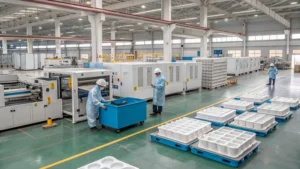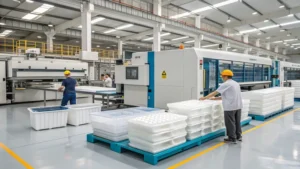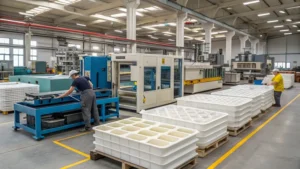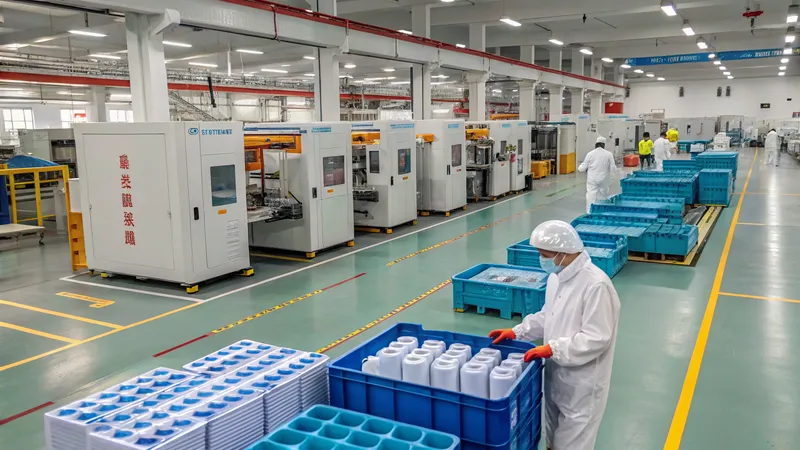
Vacuum forming is a versatile and cost-effective manufacturing process used to create a wide range of plastic products, from packaging to automotive components. Spain is home to several leading factories specializing in this technology, offering high-quality services to various industries. This guide explores the top 10 plastic vacuum forming1 factories in Spain, providing insights into their capabilities, applications, and the benefits of choosing vacuum forming for your projects.
Vacuum forming, also known as thermoforming2, is a process where a heated plastic sheet is molded into a desired shape using a vacuum, offering a cost-effective solution for producing plastic parts in low to medium volumes.
Understanding the vacuum forming process3 and the expertise of Spain’s top factories can help you make informed decisions for your manufacturing needs. Explore further to discover how vacuum forming can benefit your industry and what to consider when selecting a factory.
Vacuum forming is more cost-effective than injection molding for small production runs.True
Vacuum forming requires lower tooling costs, making it ideal for small to medium production volumes.
Vacuum forming can only produce simple shapes.False
While it is best suited for simpler geometries, vacuum forming can handle complex shapes with the right mold design and techniques.
- 1. What is Plastic Vacuum Forming?
- 2. What are the Typical Applications of Vacuum Forming?
- 3. What are the Steps in the Vacuum Forming Process?
- 4. What are the Key Factors in Vacuum Forming?
- 5. What are the Pros and Cons of Vacuum Forming?
- 6. Top 10 Plastic Vacuum Forming Factories in Spain
- 7. How to Choose the Right Vacuum Forming Factory?
- 8. What are the Differences Between Vacuum Forming and Other Forming Processes?
- 9. Conclusion
What is Plastic Vacuum Forming?
Plastic vacuum forming is a key manufacturing technique used across industries to create lightweight, durable plastic parts with precision and efficiency.

Vacuum forming is a process where a heated plastic sheet is shaped over a mold using vacuum pressure, commonly used in packaging, automotive, and consumer goods for its versatility and low cost.
| Process Type | Recommended Material Thickness | Notes |
|---|---|---|
| Thin-Gauge Forming | 0.005 - 0.060 inches | Used for disposable packaging |
| Thick-Gauge Forming | 0.060 - 0.500 inches | Used for durable parts |
Definition and Core Principles
Vacuum forming, also known as thermoforming, involves heating a thermoplastic sheet until it becomes pliable, then stretching it over a mold and applying a vacuum to shape it. The process is simple yet effective, making it ideal for producing parts with large surface areas and moderate complexity.

-
Full Technical Name: Vacuum Forming or Thermoforming
-
Common Aliases: Vacuum Molding, Plastic Forming
-
Core Principles: Heating, forming with vacuum pressure, cooling, and trimming.
Classification of Vacuum Forming
-
By Process:
- Thin-gauge forming4: For disposable packaging like trays and blister packs.
- Thick-gauge forming: For durable parts like automotive components and medical trays.
-
By Materials:
- ABS (Acrylonitrile Butadiene Styrene): Durable and impact-resistant.
- PETG (Polyethylene Terephthalate Glycol): Clear and food-safe.
- Polycarbonate: High strength and heat resistance.
- Polystyrene: Lightweight and cost-effective.

- By Applications:
- Packaging: Blister packs, clamshells, trays.
- Automotive: Dashboards, interior trim.
- Medical: Sterile trays, device housings.
- Consumer Goods: Appliance housings, toys.
Vacuum forming is widely used in the packaging industry.True
Its ability to produce lightweight, custom-shaped packaging makes it a preferred choice for blister packs and trays.
Vacuum forming is unsuitable for high-precision parts.True
While versatile, vacuum forming may require secondary operations for tight tolerances, unlike injection molding.
What are the Typical Applications of Vacuum Forming?
Vacuum forming is a go-to process for industries needing cost-effective, lightweight, and customizable plastic parts.
Vacuum forming is commonly used in packaging, automotive, medical, and consumer goods industries for creating custom parts like trays, dashboards, and enclosures.

Packaging Industry
Vacuum forming is ideal for producing blister packs, clamshells, and trays that protect and display products. Its ability to use recyclable materials like PETG5 aligns with sustainability trends.
Automotive Sector
The process is used to create large, complex components such as dashboards, door panels, and trim parts. Materials like ABS provide durability and impact resistance.
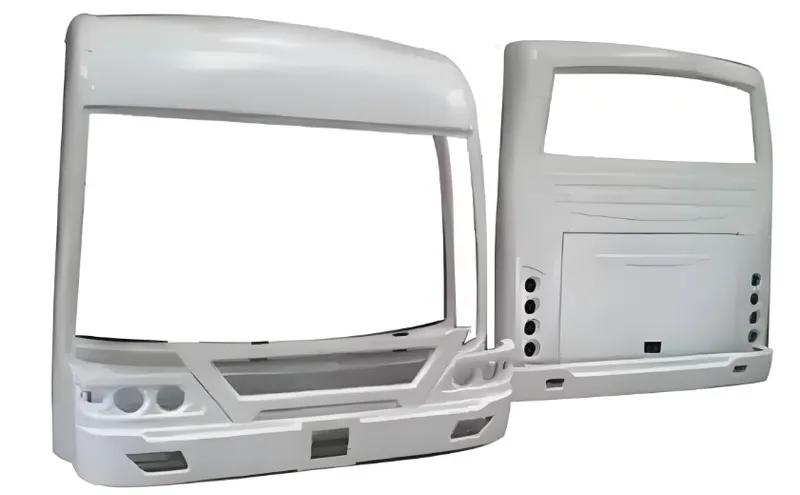
Medical Field
Vacuum forming produces sterile trays and containers for medical devices6, ensuring precision and hygiene.
Consumer Goods
It is used for aesthetic and functional parts like appliance housings and toy components, offering a balance of cost and quality.
Vacuum forming reduces tooling costs compared to injection molding.True
The molds used in vacuum forming are less expensive, making it ideal for prototyping and small runs.
Vacuum forming is only suitable for low-volume production.False
While cost-effective for small to medium runs, vacuum forming can be scaled for larger production with the right setup.
What are the Steps in the Vacuum Forming Process?
The vacuum forming process is essential for producing high-quality plastic parts with precision and efficiency.
The vacuum forming process involves heating a plastic sheet, forming it over a mold using vacuum pressure, cooling, and trimming to create the final part.
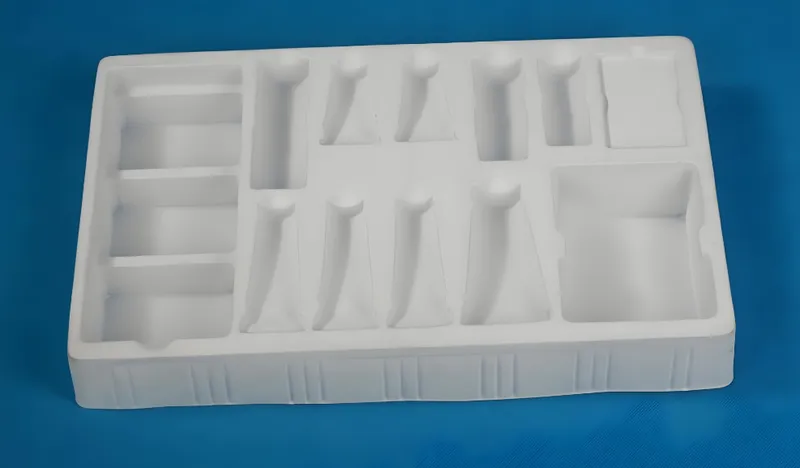
Design and Mold Creation
The process begins with designing a mold, typically made from aluminum or composite materials, which defines the shape of the final part.
Material Selection
Choose a thermoplastic sheet7 based on the application. Common materials include ABS for durability, PETG for clarity, and polystyrene for cost-effectiveness.

Heating the Plastic Sheet
The plastic sheet is heated in an oven to its forming temperature, ensuring it becomes pliable without degrading.
Forming with Vacuum Pressure
The heated sheet is draped over the mold, and a vacuum is applied to pull the plastic tightly against the mold’s surface.

Cooling and Trimming
The formed part is cooled to set its shape, then trimmed to remove excess material and achieve the final dimensions.
Quality Control
The part is inspected for defects, dimensional accuracy, and material consistency to ensure it meets specifications.
Vacuum forming always produces uniform wall thickness.False
Material stretching can lead to thinning in certain areas, requiring design adjustments for uniformity.
Vacuum forming is a rapid prototyping method.True
Its low tooling costs and quick setup make it ideal for prototyping and short lead times.
What are the Key Factors in Vacuum Forming?
The success of vacuum forming depends on several critical factors that influence the quality and performance of the final part.
Key factors in vacuum forming include material selection8, mold design9, heating temperature10, and vacuum pressure, which determine the part’s quality and consistency.

Material Selection
Choosing the right plastic is crucial. For example, ABS is ideal for impact resistance, while PETG is preferred for transparency.
Mold Design
The mold must include draft angles (2-5°) for easy demolding and avoid deep undercuts that can trap the part.
Heating Temperature
The plastic must be heated to the correct temperature to ensure pliability without burning or degrading.
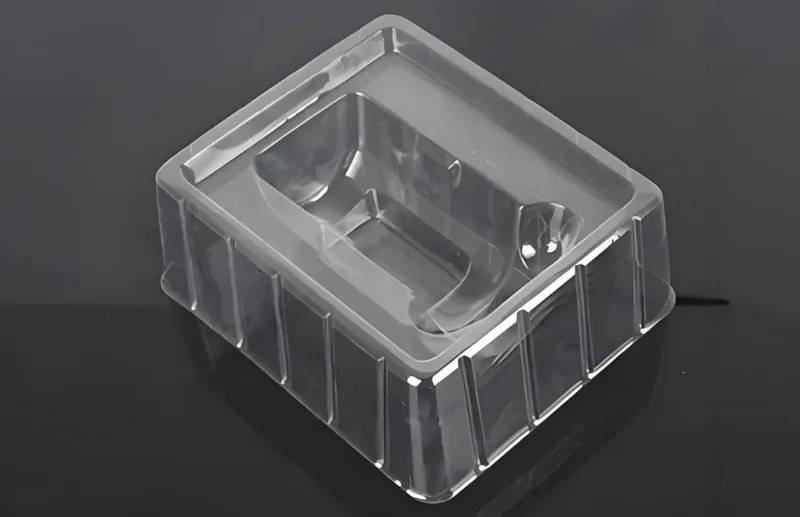
Vacuum Pressure
Adequate vacuum pressure (typically 20-27 inHg) ensures the plastic conforms tightly to the mold.
Cooling Time
Proper cooling is necessary to set the part’s shape and prevent warping or distortion.
Material choice significantly impacts the final product’s properties.True
Different plastics offer varying levels of durability, clarity, and heat resistance.
All plastics are suitable for vacuum forming.False
Only thermoplastics that can be heated and reshaped are compatible with vacuum forming.
What are the Pros and Cons of Vacuum Forming?
Vacuum forming offers several advantages but also has limitations that must be considered for each application.
Vacuum forming provides low tooling costs and versatility but may lack precision and is less suitable for high-volume production compared to injection molding.

Advantages
-
Cost-Effective Tooling: Molds are less expensive than those for injection molding.
-
Versatility: Can produce large parts with complex geometries.
-
Rapid Prototyping: Quick setup and short lead times.
-
Material Variety: Compatible with a wide range of thermoplastics.
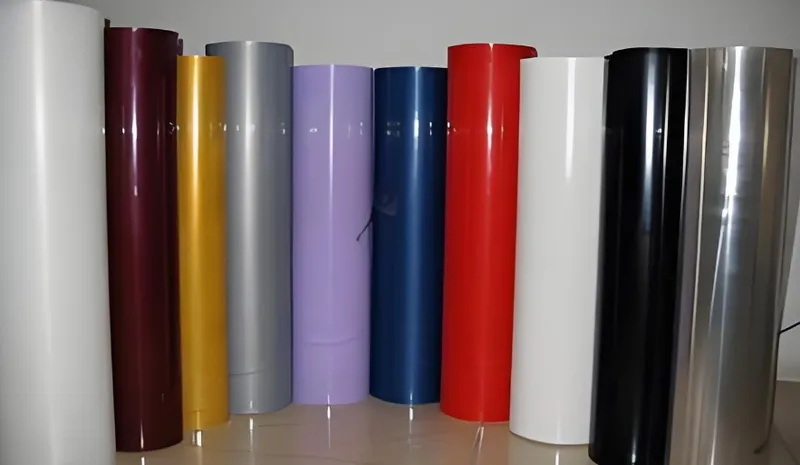
Disadvantages
-
Limited Precision: May require secondary operations for tight tolerances.
-
Variable Thickness: Stretching can cause thinning in certain areas.
-
Not Ideal for High Volumes: Less economical than injection molding for large runs.
Vacuum forming is the best choice for all plastic manufacturing needs.False
While versatile, it is not suitable for high-precision or high-volume production without additional processes.
Vacuum forming reduces material waste compared to other methods.True
The process allows for efficient use of plastic sheets, minimizing excess material.
Top 10 Plastic Vacuum Forming Factories in Spain
Spain hosts several leading vacuum forming factories known for their expertise and quality services. Below is a list of the top 10 factories, based on their reputation and capabilities.
| Factory Name | Location | Year Founded | Employees | Main Services |
|---|---|---|---|---|
| Plasticos Flome SL | Valencia, Spain | 1992 | 100-199 | Thermoforming |
| Glas Form | Barcelona, Spain | 1973 | 100-199 | Thermoforming (METHACRYLATE, POLYCARBONATE, PET-G, PS/ABS, PVC, PET, PP, HDPE) |
| COEXPAN S.A. | Madrid, Spain | 1973 | 1000+ | Thermoforming |
| Siepla | Barcelona, Spain | 2006 | 50-100 | Thermoplastic, Thermoforming, Vacuum Forming |
| SP Group | Villarrubia, Córdoba, Spain | 1985 | 201-500 | Plastics Manufacturing, Thermoplastic, Thermoforming, Vacuum Forming |
| Ecoform Dte | Barcelona, Spain | 2013 | 100-150 | Thermoforming Packaging |
| XR 66 | Barcelona, Spain | 1987 | 100-199 | Thermoforming |
| PLASNOR | Legazpi, Spain | 1974 | 100-199 | Thermoforming |
| ULMA Packaging | OÑATI GIPUZKOA, Spain | 2012 | 1000-4999 | Thermoforming |
| Plástical | ZARAGOZA, Spain | 1987 | 100-199 | Thermoforming |
How to Choose the Right Vacuum Forming Factory?
Selecting the right factory is crucial for ensuring quality and meeting project requirements.
When choosing a vacuum forming factory, consider factors like experience, material expertise, production capacity, and customer reviews to ensure they meet your project’s needs.
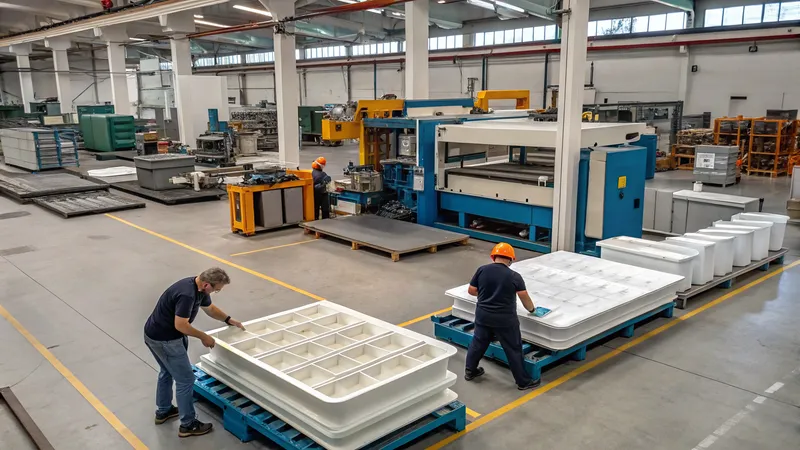
Experience and Expertise
Look for factories with a proven track record in vacuum forming, especially in your industry.
Material Compatibility
Ensure the factory works with the materials required for your project, such as ABS, PETG, or polycarbonate.
Production Capacity
Verify that the factory can handle your production volume, whether for prototyping or large-scale manufacturing.
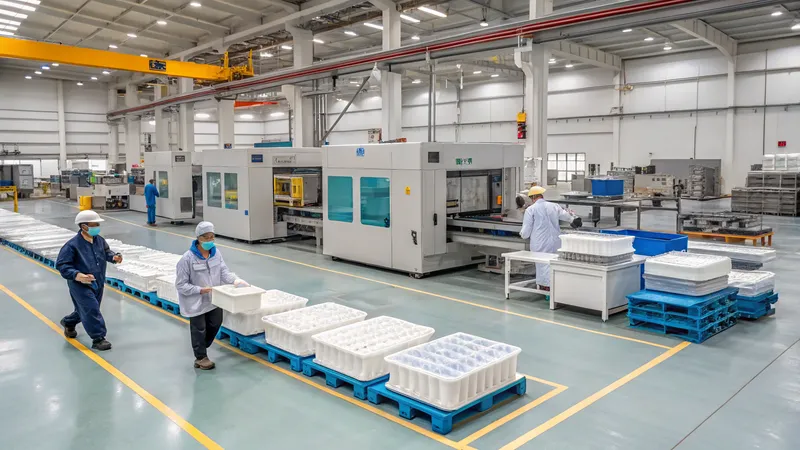
Customer Reviews
Check testimonials and case studies to gauge the factory’s reliability and quality of service.
All vacuum forming factories offer the same level of quality.False
Quality varies based on the factory’s expertise, equipment, and quality control measures.
Choosing a factory with industry-specific experience improves project outcomes.True
Factories with relevant experience are more likely to understand and meet your specific requirements.
What are the Differences Between Vacuum Forming and Other Forming Processes?
Understanding how vacuum forming compares to other processes can help you make the right choice for your project.
Vacuum forming differs from injection molding and blow molding in terms of cost, precision, and production volume, making it ideal for specific applications.
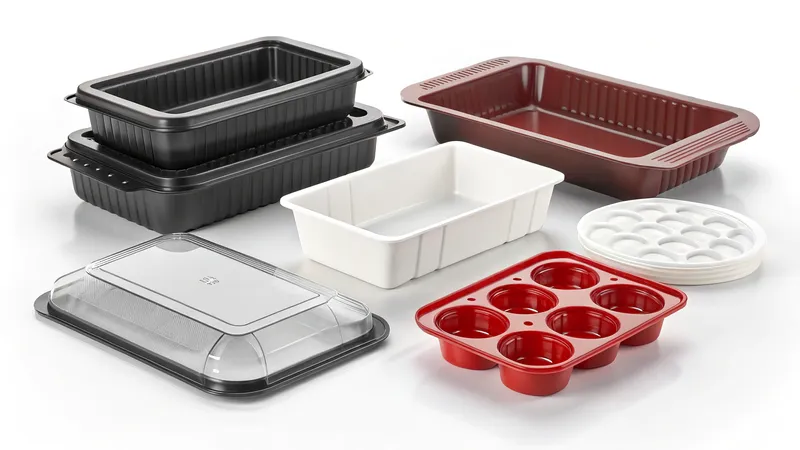
Vacuum Forming vs. Injection Molding
-
Tooling Cost: Vacuum forming has lower tooling costs.
-
Precision: Injection molding offers higher precision.
-
Production Volume: Injection molding is better for high volumes.
Vacuum Forming vs. Blow Molding
-
Part Complexity: Blow molding is used for hollow parts like bottles.
-
Material Use: Vacuum forming is more versatile in material choice.
Vacuum forming is always the cheapest option.False
While cost-effective for small runs, other processes may be more economical for large-scale production.
Vacuum forming can produce parts with undercuts.True
With specialized mold designs, vacuum forming can accommodate undercuts and complex geometries.
Conclusion
Vacuum forming is a versatile and cost-effective manufacturing process, ideal for producing plastic parts in various industries. Spain’s top vacuum forming factories, such as Plasticos Flome SL, COEXPAN S.A., and ULMA Packaging, offer expertise and quality services to meet diverse project needs. By understanding the process, applications, and key factors, you can make informed decisions and select the right factory for your requirements.
-
Discover the advantages of plastic vacuum forming, including cost-effectiveness and versatility for various industries. ↩
-
Learn how thermoforming stands out among plastic manufacturing methods and its unique benefits for production. ↩
-
Explore the vacuum forming process in detail and its diverse applications across multiple sectors. ↩
-
Discover the significance of thin-gauge forming in packaging solutions, which can help you make informed decisions in product design. ↩
-
Learn about the advantages of PETG and its role in sustainable manufacturing practices. ↩
-
Discover the manufacturing process of sterile medical trays and containers, crucial for healthcare safety. ↩
-
Discover the various types of thermoplastic sheets and their specific applications in vacuum forming, enhancing your material selection knowledge. ↩
-
Understanding material selection is vital for achieving optimal results in vacuum forming. Explore this link to enhance your knowledge. ↩
-
Mold design plays a crucial role in the success of vacuum forming. Discover insights that can improve your mold design techniques. ↩
-
Heating temperature is key to ensuring the right pliability in vacuum forming. Learn more about achieving the perfect temperature. ↩



